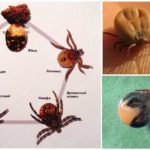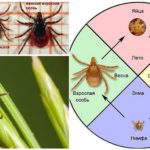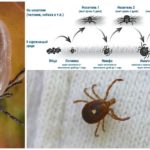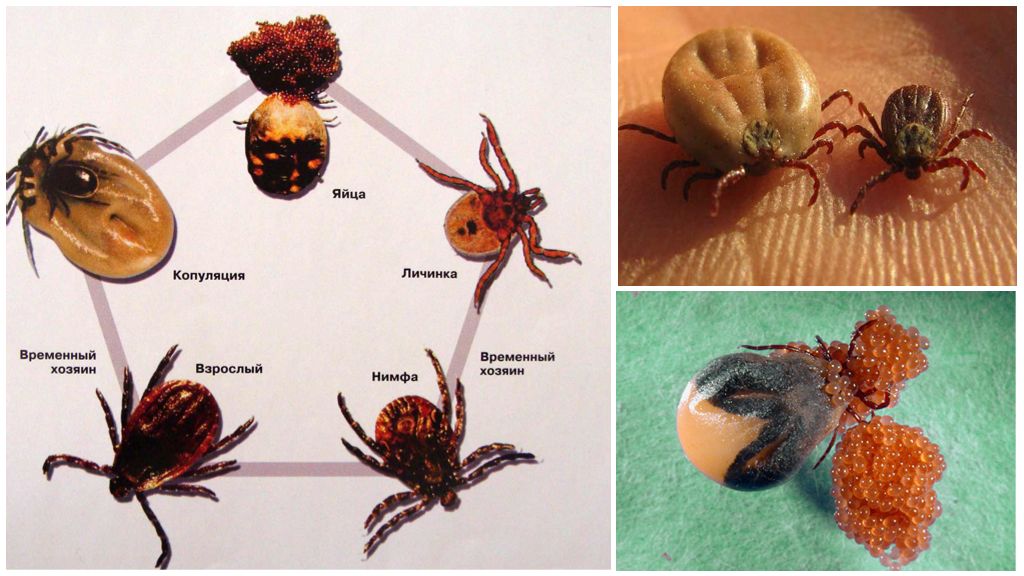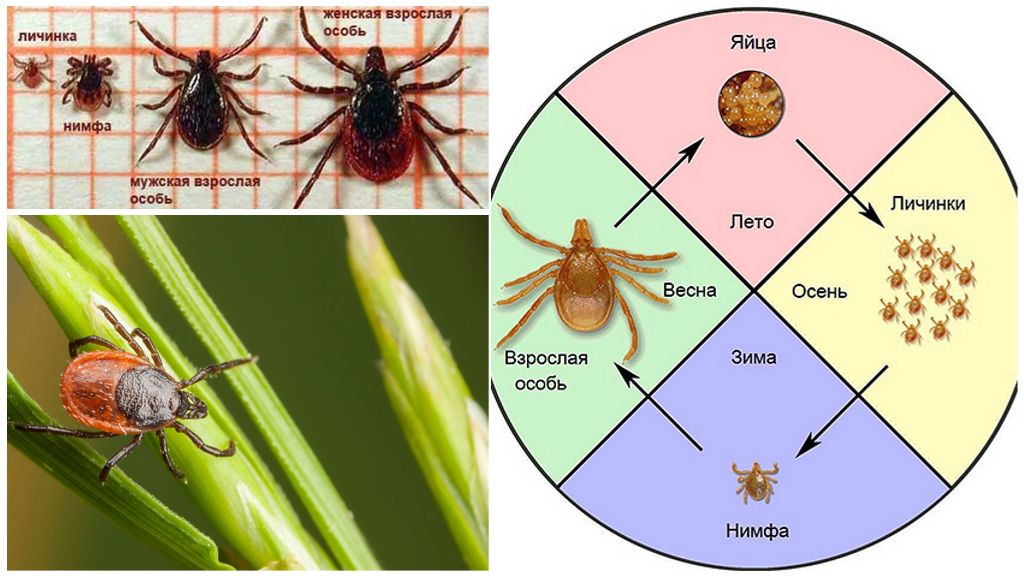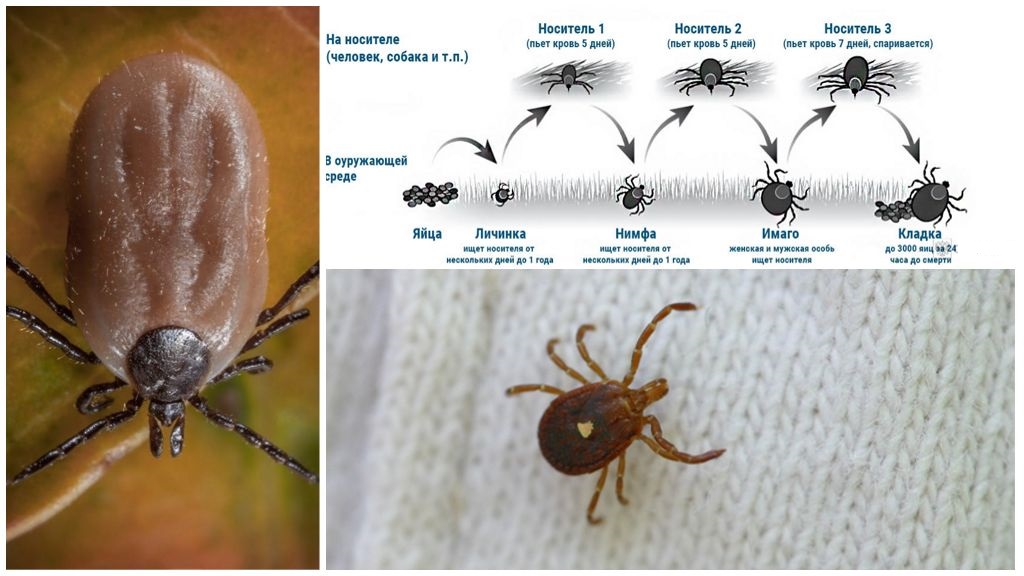Tick breeding
Content
- Cycle development and reproduction of the tick
- Tick development cycle
- Tick generation
It is difficult to say how ticks multiply, responding immediately for the entire subclass. Among the many diverse species there are those who have developed a live birth, although most continue to lay eggs. When they talk about reproduction of ticks, they usually mean the life cycle of the Ixodid, as the most common group on the planet Akari subclass.Another plus of the Ixodes is the most typical life cycle for acarids. But first you need to touch on the issue of live birth.
Viviparous
This concept is conditional in Akari. There are only two types who have switched to a true live birth. The rest give their body to feed offspring.
After fertilization, such viviparous female waits for the maturation of the eggs and dies. The death of the female is in autumn, and the eggs hibernate in the body of the tick. With the onset of heat from the eggs, the larvae hatch, which for some time “eat up” the mother, in parallel gnawing its way into the wild. The life of posthumously viviparous females lasts only one summer.
Interesting!
Since ticks of these species appear, having a supply of food, nutrients in the eggs of posthumously vivipating females are less than those of egg-laying.
The rest of the species preferred to do without extreme and lay eggs.
Peculiarities of Ixodic Breeding
Ticks breed on animals right in the process of feeding. The male fertilizes the female while she drinks blood. He climbs on the female's abdomen and is fixed with suction cups. Such exercises are necessary for him, since the female's sexual opening from our point of view is in her middle of the body.But it is in the drunk blood of the individual. Normally, the hole is located between the fourth pair of legs and the hungry arthropod closer to the rear end of the body.
After attaching to the female, the male immerses the proboscis in the genital opening to enlarge it and wet it with saliva. The process lasts for several hours, during which the male ectospermofor has enough time to swell and fill with semen.
Having decided that he has worked enough over the girlfriend's hole, the tick extracts the proboscis, seizes his sexual organ with chelicera and plunges it into the female. Ticks mate on the principle of “who is closer”, as in most cases the male is capable of only one sexual intercourse. After mating, the male dies, and the female finishes the blood for several more days.
Twice the male can mate only under the condition that there is a second female nearby, and he has managed to drink blood before mating.
Interesting!
If there was no male nearby, the female will lay eggs anyway, but only females will be in the offspring. With the participation of the male, both sexes of ticks come out of the eggs.
Gender Differences of Ticks
It is not difficult to distinguish a female tick from a male, since the Ixodes and other armored ones have chitinous shields protecting the body. In female, the size of the shield is only ⅓ of the total area of the body.Unprotected belly of red or gray color. At the male, the shield covers the entire back, and the tick has a brown color.
Doctors, answering the question who is more dangerous, male or female tick, unequivocally argue that the male. Since the main sexual difference lies in the fact that the male sticks in only for a few hours, after which it is quickly removed. Noticing the crawling tick, people do not attach importance to him, thinking that he had not yet had time to bite. The female sticks in for several days and is easier to detect.
On a note!
In the case of encephalitic ticks, the male is the most dangerous because it bites quickly and painlessly. When he bites, he can infect the victim with encephalitis, but the person will not even be aware of this.
Life cycle
Vital activity of ticks begins when the air temperature rises above 1 ° C. The mating period for ticks falls in May-June. After that, the fertilized females finish their blood and start laying eggs. Activity ticks at this time subsides.
On a note!
Since the time to reduce activity coincides with the onset of summer heat, there is a belief that ticks do not like hot weather.
How many eggs a tick lays depends on its species and longevity. The female tick can lay from 100 to 17 thousand eggs in its lifetime. In nature, the mite lays its eggs in soft, moist soil. In urban conditions, as it will. If the female "arrived" in an apartment on a dog and was not noticed, she would lay eggs right in the living room. After some time, the apartment will be filled with actively moving transparent larvae 0.5 mm in size.
Stages of development
The maximum number of stages of development in parasites 4:
- egg;
- larva;
- nymph;
- imago.
Tick eggs have a very large size in relation to the female. They can be of various shapes, with a smooth or embossed shell.
On a note!
Each stage of development of parasites launches a portion of blood. That is, to turn from a larva into a nymph, and then into an adult, the tick should drink blood once. In total, in their lives, these arthropods drink blood only three times.
After some time, depending on the temperature and humidity of the environment, the mite larvae leave the eggs. These are very small organisms with a size of less than 0.5 mm. They look almost like adults, but have only 3 pairs of legs. The tick larva does not have its own name, since it has only one stage of development.
Being aware of the “three meals a day” of acarids, many people doubt whether the tick larva is really dangerous for humans. After all, she had not drank blood. For many diseases there is no, not dangerous. But encephalitis can be transmitted to the larvae by the tick during the laying of eggs. Therefore, even the larva can can encephalitis. And therefore, it is dangerous for humans.
After consuming the blood, the larva falls into a stupor and becomes a nymph. This stage takes a little time.
Important!
The larva perfectly tolerates flooding and can be under water for about a month without harm to itself.
Three stages of the development of nymphs
The development of nymphs occurs in 3 stages. At each stage for the nymphs has its own name:
- protonymph;
- deutonymph;
- tritonym
The mite nymph differs from the imago only in a smaller number of setae on the paws and genitals, a smaller number of genital tentacles and smaller sizes. The size of the nymph is 1-1.5 mm.
The nymph of the tick is dangerous to humans much more larvae. You need to be "lucky" to stumble upon a young arthropod, infected with encephalitis immediately from the egg. The nymph was once fed independently and could drink the blood of a sick animal.
Some types of ticks miss the stage of deutonymph, others do not go beyond the second. In the Ixodes, the main factor triggering the transformation of a nymph into an imago is blood supply. If the nymph is hungry, she will go to winter without becoming an adult.
Imago
After the launch of the mechanism of transformation of tritonymphs into imago, the nymph has serious changes in the structure of the body:
- the structure of the outer integument is complicated;
- the number of setae increases;
- in higher species, trachea, shell, pteroforms, plates and much more are formed.
“Full-fledged” mites are born only after molting Tritymphon. In structure, they are very different from the larvae and nymphs.
Generational generations
Depending on the type and conditions of the environment in which ticks are forced to live, the number of generations per year can vary greatly. In some species, the cyclical nature of the breeding seasons is timed to the seasons of the year or the external environmental conditions.
There are species that develop from egg to death in a year. Others can give up to 20 generations per season. Ixodic ticks are long-lived. These arthropods do not have time to fully develop in 1 season.Their lifespan ranges from 2 to 4 years depending on environmental conditions and good luck with hunting.
Itch itch
It refers to sarkoptoid mites, who neglected one of the stages of development at the nymph stage. The itch goes through only two stages of the nymph before becoming an imago.
The genitals are located in the same place where Ixodes ticks: between the bases of the 4th pair of legs. Males mate with teleonym names (nymph II) on the surface of the body. After mating, the male dies, and the female goes to the epidermis for laying moves and laying eggs.
Life expectancy of the female is up to 2 months. During this time, she lays 2-3 eggs per day per passages under the skin.
The hatched larvae penetrate the skin and undergo metamorphose changes in the papules, vesicles and in the passages under the skin.
Important!
Reproduction scabies itch is possible only on the surface of the skin. In adverse conditions outside, the scabby mites very quickly die.

